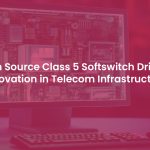As technology advances, we all expect higher security with the help of innovative technologies for all tools we use, including telephony infrastructure. However, things are surprisingly different. Technology has two sides and the negative side is also growing along with the positive side. According to a telephony report, telecommunication frauds cost approximately 4 to 7 billion USD of loss annually (Source) to this industry. Apart from this loss, numerous other fraud attempts make life difficult for both customers and service providers.
To prevent your own business in the telecom industry along with the interest of your clients, you need to know
The major telecom fraud trends in the telecommunication industry and how they can affect a business.
1. 5G and IoT attacks
5G technology with M2M device connectivity and IoT solutions are taking the world by storm. It claims to make the lives of people easy and fun, but it is not going to stop there, it is also going to increase threats and attacks. For hackers, it is easier to target IoT devices and seize 5g networks and this has increased the risk of common VoIP frauds like botnet attacks, man-in-the-middle attack, denial of service, etc.
Defend Your Telecom Company from Evolving Fraud Threats.
As 5G and IoT are still emerging in the telecom industry, fraud attacks are likely to increase distrust in your service by consumers. It will reduce the market capture rate of your business and can negatively affect the brand positioning strategy
2. International Revenue Sharing Fraud (IRSF)
This has been one of the major threats in the telecom industry for many years and it is still on the list of top telecommunication frauds. IRSF attackers target businesses to abuse premium numbers. They make calls using premium numbers and receive revenue share from the destinations. If there is no clear and automated mechanism to stop this type of attack, tracking becomes difficult due to these calls being made during off working hours.
This kind of attack causes huge financial losses for the customers and providers as well.
It is necessary to know the top ways to fight against this type of fraudulent activity.
You might be interested in exploring the top ways to fight against fraud attacks in the VoIP based telecommunication industry. Read our complete guide.
3. Caller ID Spoofing
This is the most notorious telecom fraud in the industry. The attacker pretends to be someone a call recipient already knows. The attacker impersonates a relative, friend, or commonly someone from a legal department (e.g., police, tax department) to request money. Most customers get trapped in this kind of fraud attack and pay money.
This not only causes financial loss to the customers, but again it risks the brand identity of the provider because the carrier is handling call routing. The US government has already imposed a security measure by implementing the STIR/SHAKEN certificate.
If you are a carrier or telecom service provider in the USA, you must know about STIR/SHAKEN. Even if you are not offering services in the USA, implementing STIR/SHAKEN can be a great move.
If you are interested in learning more about STIR/SHAKEN, then here is a quick guide on STIR/SHAKEN.
4. Synthetic ID
According to one of the articles published by Forbes, this type of telephony fraud will reach 5 billion USD by 2024 (Source). It is one of the most trending fraud attacks in the telecom industry. Attackers use the real identity of a consumer by fetching data from the dark web and using it for their own gain. The fake ID, which is also called synthetic ID will have all the required information and proofs to appear legitimate. The attackers use synthetic IDs to sign up and use the services of CSPs and harm them financially.
IRSF attackers sometimes utilize the synthetic ID attack, which can cause significant losses for communication service providers. By the time a CSP realizes that the ID being used is synthetic, the damage has already occurred.
To prevent this type of attack, it is necessary to use fraud management software that can automatically detect misuse of the system before it is too late.
Concluding notes
Similar to any technological invention, VoIP technology also has dark and bright sides. As technology is advancing, threats and attacks are also increasing like anything. New trends are setting, elevating the loss and reaching billions of dollars every month. Thus, it is necessary to know major telephony fraud types and take preventive steps.
We have built a powerful fraud management software solution. Moreover, we also provide consultation and other services required to safeguard your business from telecommunication frauds. To learn more about our services and how we can help you protect your business from attackers, contact us.





